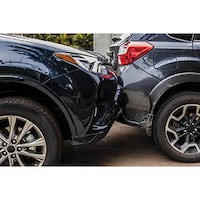Though accidents occur every day, drivers can take steps to reduce their risk of being involved in one.
Driving a car or truck is part of daily life for most people. Commutes to work or school, leisure trips or time spent behind the wheel as part of a profession compel people to drive each and every day. Although most trips to the office or the store are uneventful, the risk that something may go awry is present any time a person gets behind the wheel, and drivers need to plan accordingly.
The National Center for Statistics and Analysis says there were approximately 16,200 automotive accidents per day in the United States in 2022, the most recent year for data. This number has steadily risen over the last decade and may be attributable to a number of factors, including increased vehicle usage. Diamond and Diamond Lawyers in Canada says approximately four Canadians die and 175 are injured in impairment-related crashes every day. Though accidents occur every day, drivers can take steps to reduce their risk of being involved in one.
Stick to the speed limit
Speed limits are posted on roadways for a reason. Exceeding speed limits significantly increases the risk of getting into an accident, and many accidents are directly related to speeding. Slowing down can make roadways safer.
Eliminate distractions
Smartphones, GPS devices, passengers, pets in the car, or anything that causes a person to take his or her eyes off of the road, even for mere seconds, can increase the risk of being in an auto accident. Accident Care and Treatment Center, Inc. says distracted driving is the primary cause of car accidents each year. Smartphones are a modern distraction, and keeping phones turned off and out of reach can keep drivers safer.
Change your perception
It is important to think of a car or truck as what it truly is: 3,000 pounds or more of fast-moving metal that can cause a lot of damage. Those who do not drive responsibly, or feel they are invincible behind the wheel, could be on a crash course for an auto accident. Treating a vehicle with respect is a must.
Leave a space cushion
Tailgating and aggressive driving maneuvers that do not leave an adequate distance between vehicles can compound the problem of accidents. Travelers insurance company urges drivers to stay at least three seconds behind the vehicle ahead of them, and longer for those driving heavier vehicles. The timing also should be extended when weather conditions are bad. A significant cushion enables drivers to stop safely or maneuver around to avoid an accident.
Improve visibility
A cracked or dirty windshield or dim headlights can diminish visibility. Being able to see and be seen when on the road is a major contributor to accident risk reduction.
Brush up on skills
Newly minted licensed drivers and older drivers may need a driving skills refresher course. Oftentimes learning how to avoid accidents comes down to experience and defensive driving techniques. Those who feel they may need a little extra practice can enroll in a course. An additional upside is that such a course also can help reduce insurance premiums.
Know your limitations
Geico notes the risk of a fatal crash is three times higher at night than in the day for every mile driven. Although it may not be possible to avoid nighttime driving entirely, limiting it, particularly for those who have challenges seeing at night or in dim conditions, can help reduce accident risk. The same can be said for staying off of roads in inclement weather.
Don't drive impaired
Driving while under the influence of drugs (both illegal and prescription), alcohol and/or other substances greatly increases accident risk.
Various strategies can help drivers reduce their risk of being involved in auto accidents.
Various strategies can help drivers reduce their risk of being involved in auto accidents.


